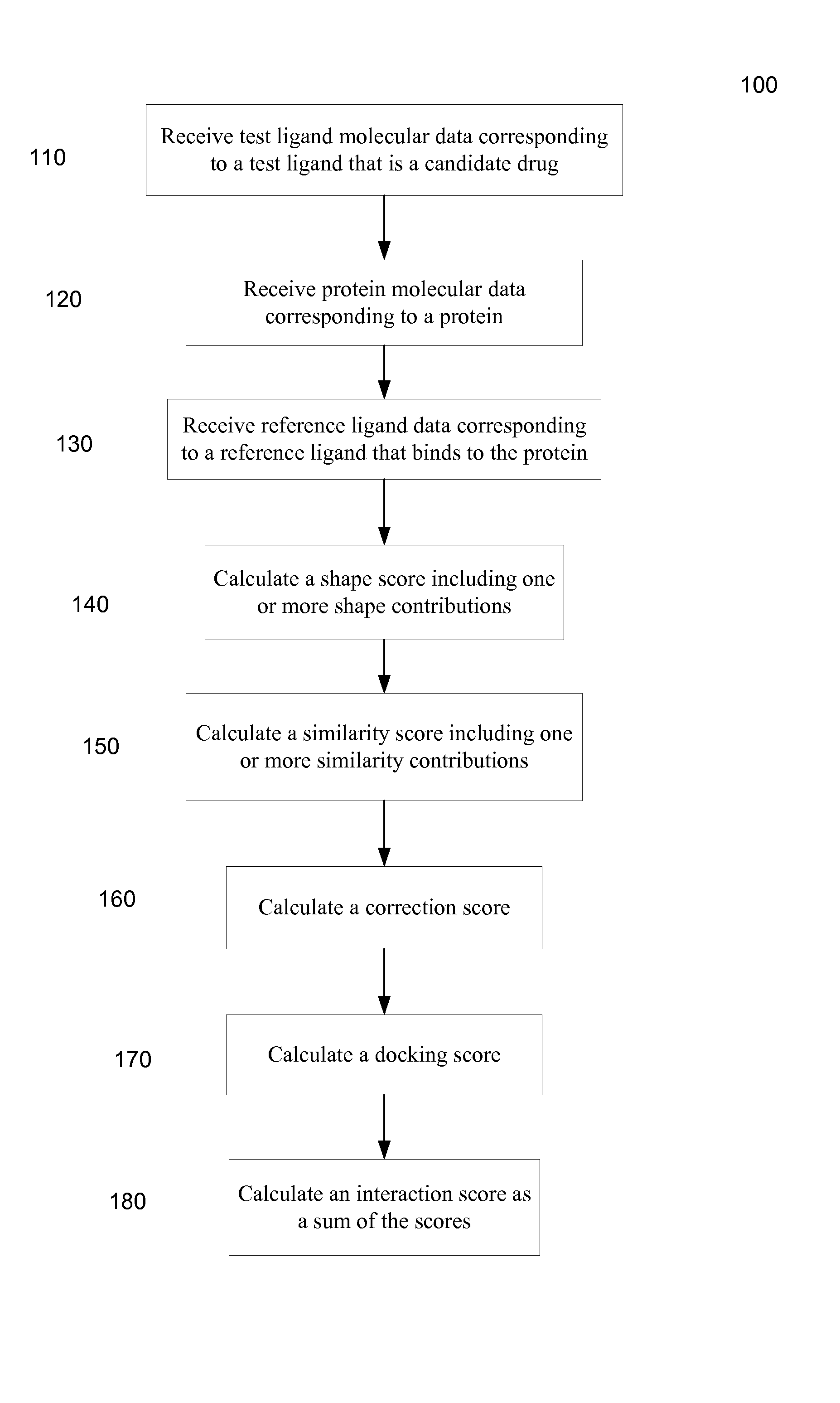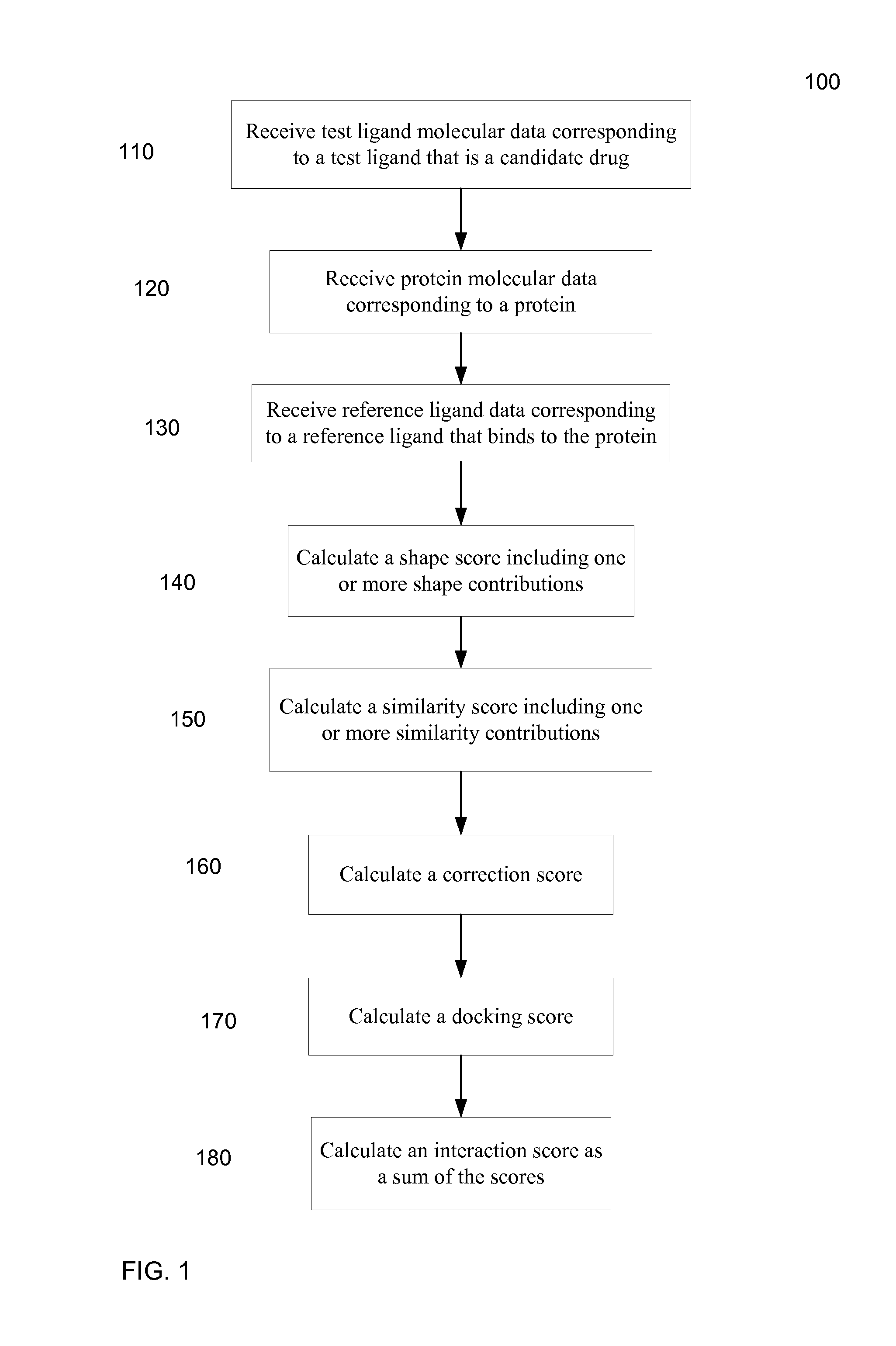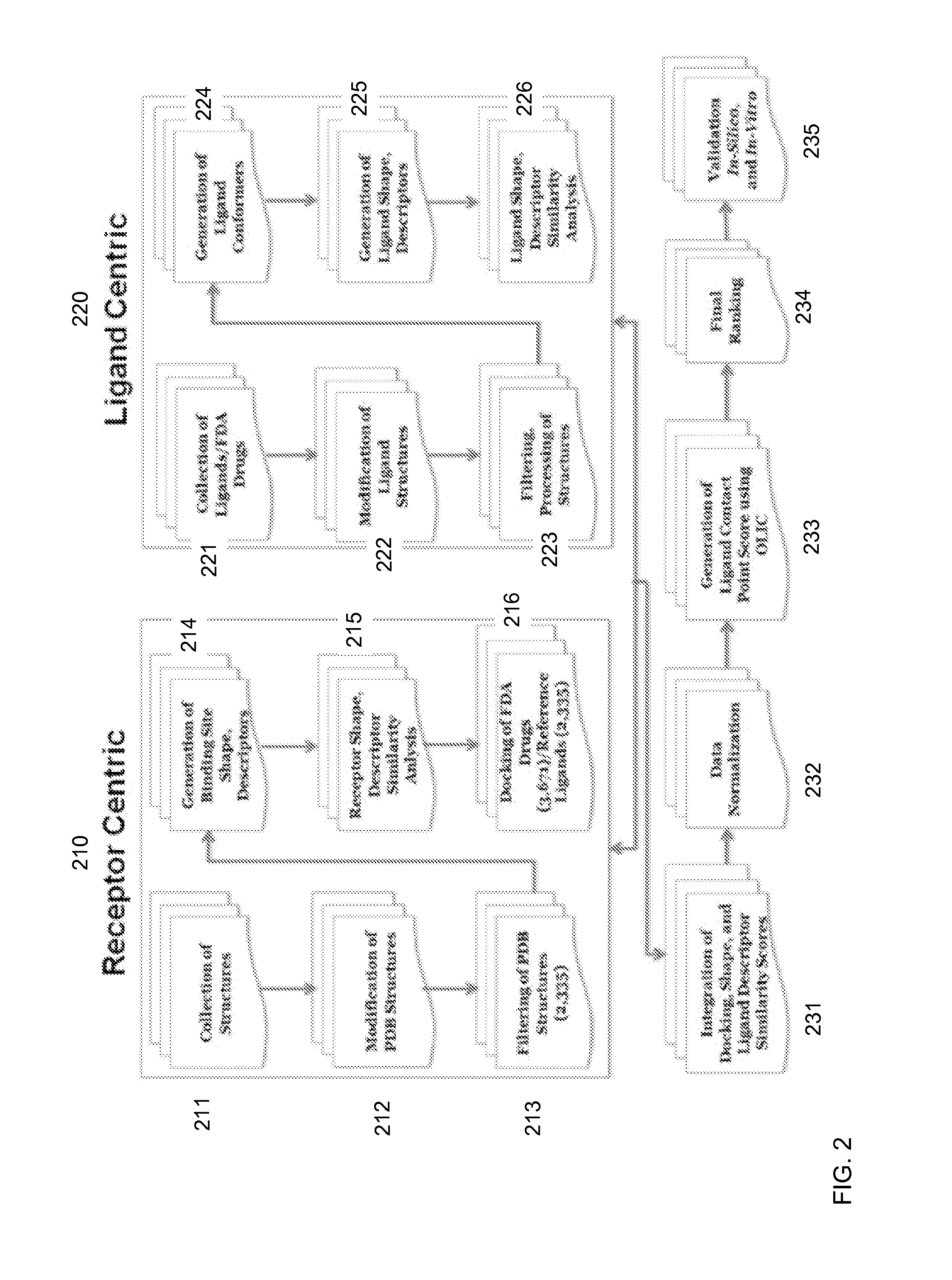Method for predicting drug-target interactions and uses for drug repositioning
- Summary
- Abstract
- Description
- Claims
- Application Information
AI Technical Summary
Benefits of technology
Problems solved by technology
Method used
Image
Examples
Embodiment Construction
[0026]Described herein are methods for predicting drug-target interactions, such as, for example, the molecule of best fit for a target. Embodiments can provide a comprehensive prediction method, which may collectively be called “Train-Match-Fit-Streamline” (TMFS), that can reduce false positive predictions and enrich for the highest confidence drug-target interactions. Previous studies screened FDA drugs using either chemical similarity or docking with stringent scoring criteria. In contrast, embodiments described herein can combine different descriptors including, for example, shape, topology and chemical signatures, physico-chemical functional descriptors, contact points of the ligand and the target protein, chemical similarity, and docking score. Descriptors can be trained with template knowledge; match and fit of the signatures identified; and the data stream lined.
[0027]Some embodiments can be receptor-centric (i.e., focuses on the target receptor). Other embodiments can be li...
PUM
 Login to View More
Login to View More Abstract
Description
Claims
Application Information
 Login to View More
Login to View More - R&D
- Intellectual Property
- Life Sciences
- Materials
- Tech Scout
- Unparalleled Data Quality
- Higher Quality Content
- 60% Fewer Hallucinations
Browse by: Latest US Patents, China's latest patents, Technical Efficacy Thesaurus, Application Domain, Technology Topic, Popular Technical Reports.
© 2025 PatSnap. All rights reserved.Legal|Privacy policy|Modern Slavery Act Transparency Statement|Sitemap|About US| Contact US: help@patsnap.com



